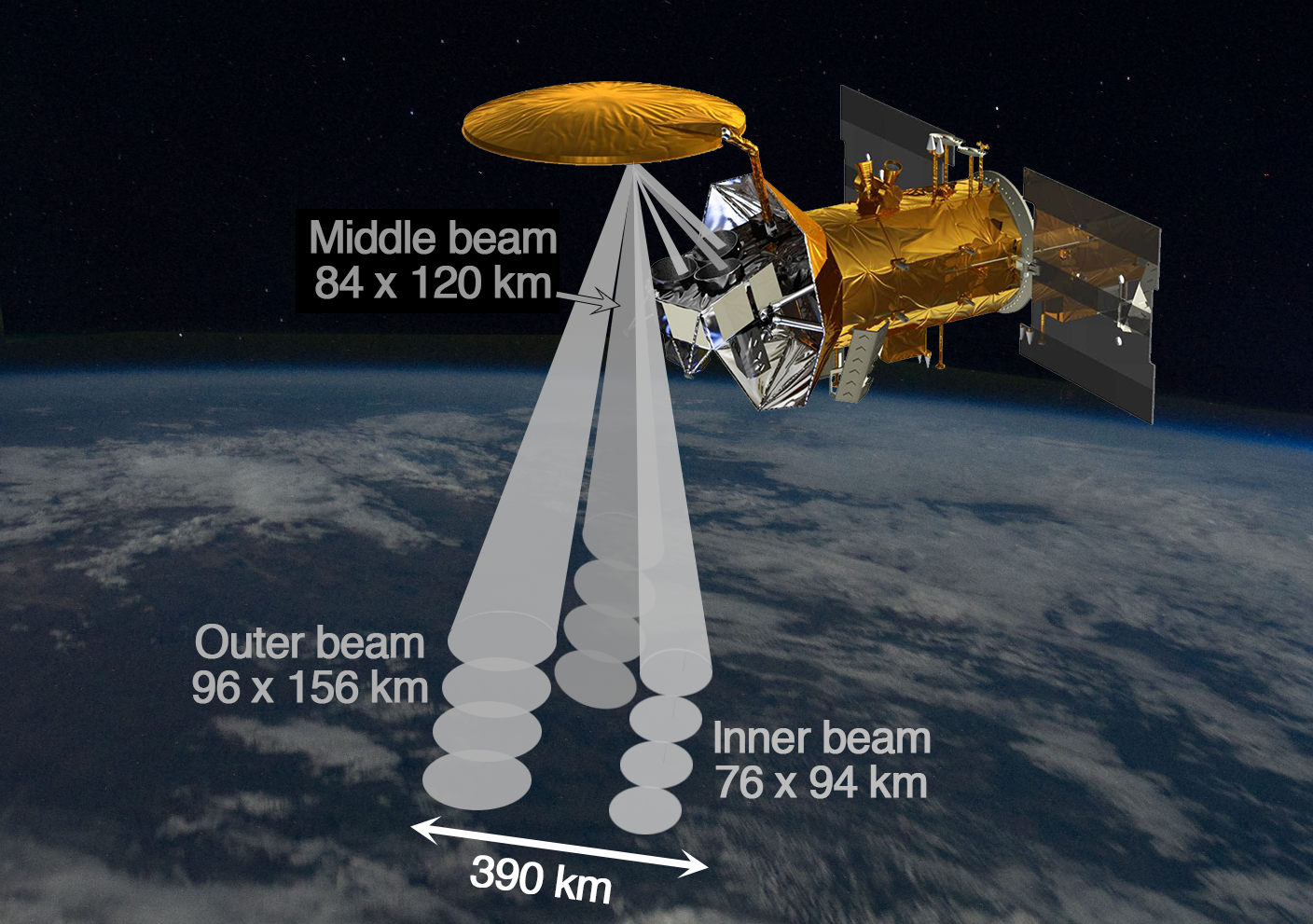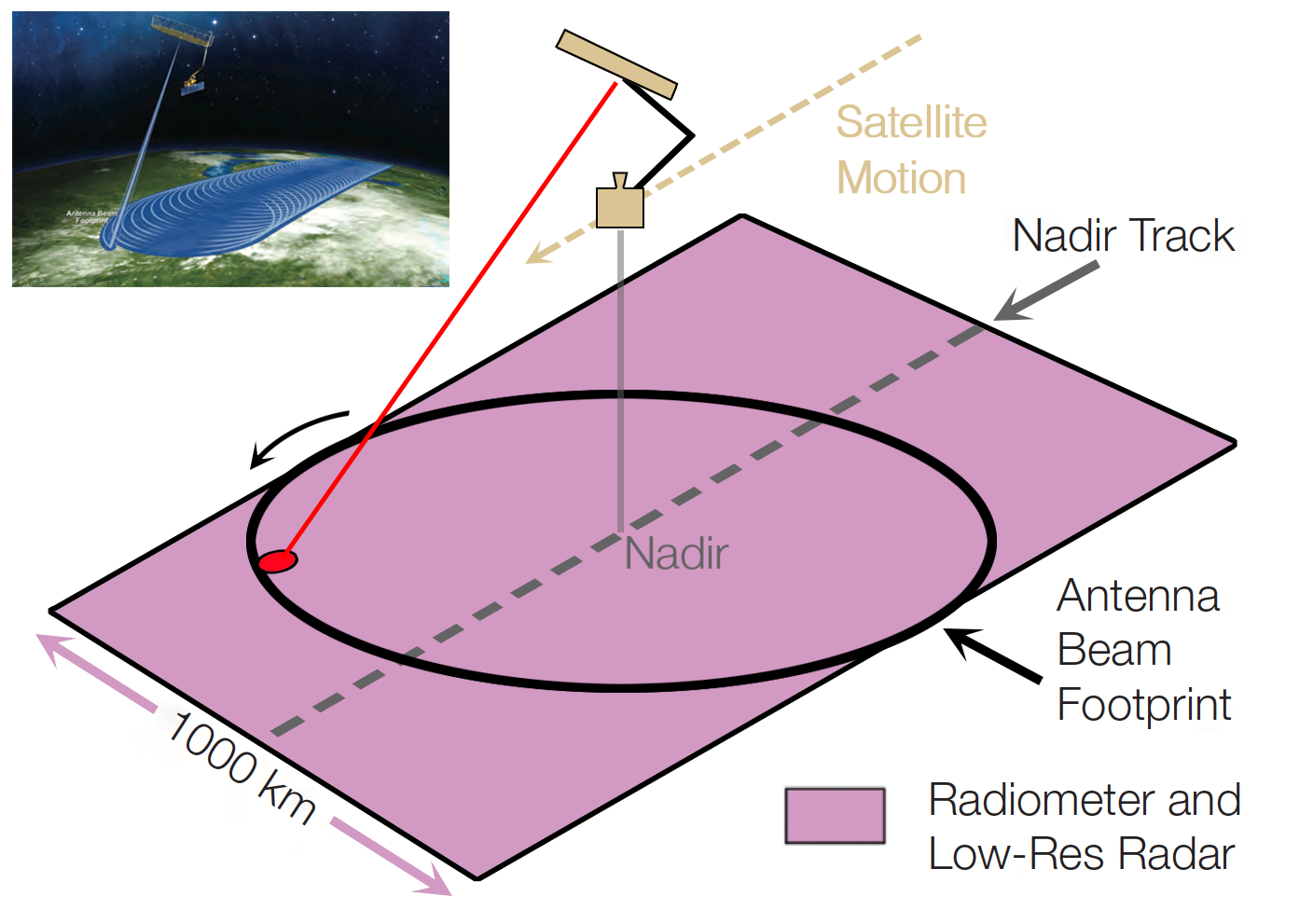NASA's goal is to measure salinity changes of 0.2 PSS every month, equivalent to about 2 parts in 10,000 (about 1/8 teaspoon of salt in a gallon of water). Retrieving salinity with this precision is very challenging and requires specific strategies to maximize detection of the salinity signal. [Learn more about Aquarius retrieval].
The salinity signal comes from the top centimeter (0.4 inch) of the ocean surface. Part of the natural emissivity of the ocean, it is measured as brightness temperature. Emissivity is modulated by the electrical conductivity of seawater, which is tied to its salinity.
SMAP has been measuring salinity since April 2015, overlapping with Aquarius – which began collecting salinity data in August 2011 – for a few weeks. In similar sun-synchronous, near-polar orbits, their positions were 12 hours apart (i.e., looking at opposite sides of the Earth at any given time).
Radiometers built for Aquarius and SMAP were designed to measure the ocean's brightness temperature at a frequency of 1.413 GHz. This is the L-band portion of the electromagnetic spectrum, at a frequency protected for radio astronomy purposes. Nonetheless, radio frequency interference (RFI) has been detected by NASA's salinity satellites. Thus, salinity data from NASA satellites are flagged to indicate when RFI is likely to be present.
The table below compares various characteristics of Aquarius and SMAP.
| Aquarius | SMAP | |
| Orbit altitude | 657 km (408 mi) | 685 km (426 mi) |
| Orbit repeat time | 7 days | 8 days |
| Ascending node | 6 PM local | 6 PM local |
| Antenna diameter | 2.5 m (8.2 ft) | 6 m (19.7 ft) |
| Antenna type 1 | Stationary; 100% reflective | Spinning; 99% reflective (1% emissive) |
| Radiometer(s) | 3 (25.8°, 33.8°, 40.3°) | 1 |
| Swath width | 390 km (242 mi) | 1000 km (621 mi) |
| Global coverage | 7 days | 3 days |
| Footprint size 2 | 150 x 150 km (93 x 93 mi) | 39 x 47 km (24 x 29 mi) |
| Operation period | 25-Aug-2011 to 07-Jun-2015 | 01-Apr-2015 to present |
| Radar/Wind Correction | Scatterometer (1.26 GHz); Internal wind correction provided | High-res radar failed 07-Jul-15; External wind correction needed |
| 1 SMAP's antenna is 1% emissive. This creates erroneous signals when the antenna goes in/out of solar eclipse, due to very large changes in antenna temperature. 2 Note that SMAP's footprint size is smaller than that of Aquarius, thus it has better spatial resolution (~40 km). However, SMAP’s 40-km product is much noisier than Aquarius. As a result, some SMAP products are spatially averaged to larger footprints (i.e., 60 km, 70 km) to reduce data noise. | ||
Emissivity is defined as the ratio of the energy radiated from a material's surface to that radiated from a blackbody (a perfect emitter) at the same temperature and wavelength and under the same viewing conditions.
Emissivity is measured as parameter known as brightness temperature. Measured in Kelvin, it is based on the instrument's viewing angle, frequency, and temperature of seawater. If brightness temperature is higher, then salinity is lower. Conversely, lower brightness temperature means that the seawater is saltier.


